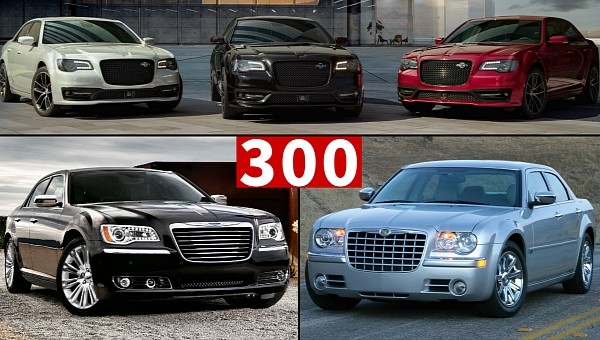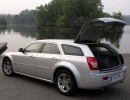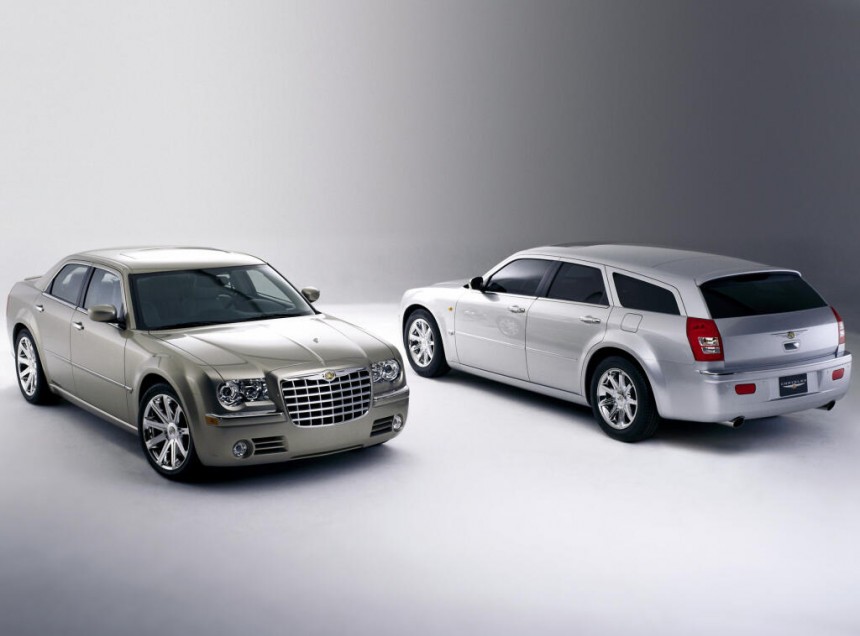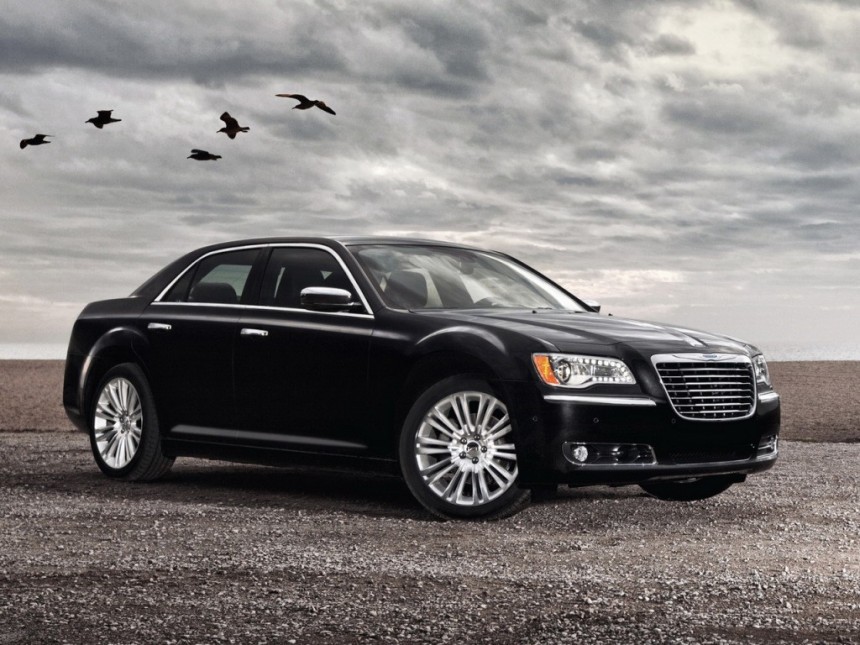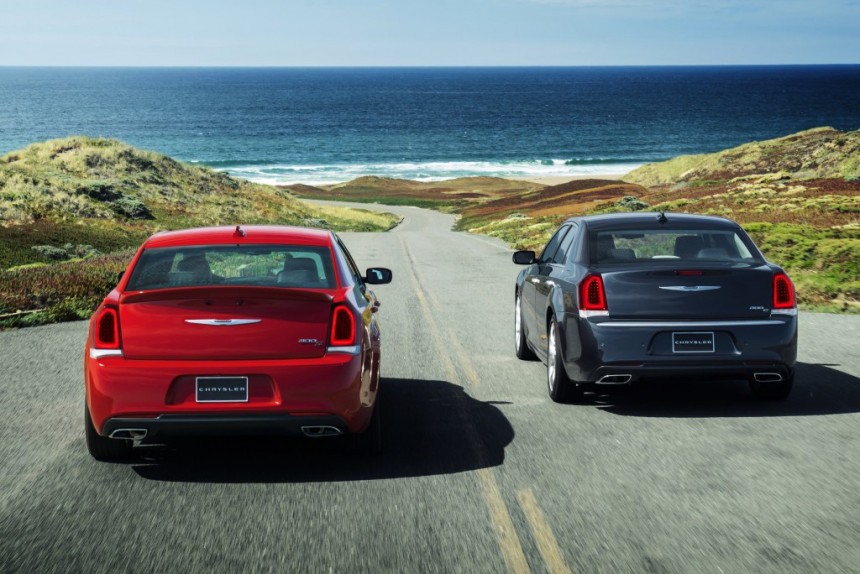Originally based in Highland Park, the Chrysler Corporation was founded in 1925 by industrial pioneer Walter Percy Chrysler. Headquartered in nearby Auburn Hills since 1993, the third-largest American automaker of the Big Three in Detroit gave us many iconic muscle cars over the years, including the Plymouth Superbird and Dodge Super Bee. The Chrysler brand was – and still is – focused on luxury first and foremost. This brings us to the series of full-size luxobarges we’ll cover thoroughly in this feature, namely the LX-based 300.
To be discontinued after the 2023 model year due to its rather antiquated platform and poor sales, the LX-based 300 wouldn’t have been possible without the so-called letter series from the 1950s. The original C-300 for 1955 was named this way after the peak output of its Hemi V8, which cranks out a round 300 ponies and 345 pound-feet (468 Nm) of torque.
The non-letter series can be considered a continuation of the letter series started by the C-300. It replaced the Windsor line of vehicles and DeSoto marque’s entire range. Chrysler discontinued the non-letter series in 1971, only to bring the 300 nameplate back in 1979 in the guise of an optional package for the Newport-based Cordoba personal luxury car. This moniker was also used for the 300M from the late 1990s and early 2000s, a FWD luxury sedan that was supposed to roll out as the Eagle Vision.
Radically different from the preceding 300s, the 300M was produced at the Brampton assembly plant in Canada, where Chrysler has been making the LX-based 300 since 2004. Introduced for the 2005 model year with great pomp and circumstance with standard rear- and optional all-wheel drive, the sedan that keeps on giving wouldn’t have been possible without the engineering expertise of German manufacturer Daimler, now Mercedes-Benz Group.
Automotive media outlets praised the 300 for the Merc-like handling and ride quality at both urban and highway speeds, which isn’t baseless hyperbole. As part of the DaimlerChrysler partnership that went sour in 2007, the American company’s engineers were flown to Germany to get acquainted with Merc’s engineering prowess. Chrysler derived a handful of components from the W211 E-Class and W220 S-Class for the LX vehicle architecture of the 300, including a plethora of suspension componentry.
The press kit for the 2005 model was published in February 2004 on Chrysler’s media portal, which lists three powertrain choices for the first year of production: a 2.7-liter V6, a slightly bigger one for the Touring and Limited trim levels, and a V8 for the 300C. Only the 5.7-liter HEMI came with the 5G-Tronic automatic, whereas V6-equipped variants of the 300 made do with the Chrysler-designed Ultradrive four-speed automatic.
HEMI-powered vehicles also boast MDS, which stands for Multiple-Displacement System. The cylinder deactivation technology enables the naturally-aspirated V8 to shut off a bank of cylinders in certain driving scenarios to reduce fuel consumption. The 5.7-liter mill cranks out 340 horsepower and 390 pound-feet (529 Nm). With the said engine, the 300C hits 60 miles per hour (97 kilometers per hour) in an estimated 6.3 seconds.
Also produced in Austria by contract manufacturer Magna Steyr and in China by the Beijing Benz joint venture, the notchback-styled 300 was joined by a five-door station wagon pretty much everywhere except for its domestic market. Twinned with the Dodge Charger-based Magnum, the Chrysler 300C Touring was offered in South America, Europe, Australia, Japan, and Middle Eastern markets. Depending on the market, a Merc-supplied V6 turbo diesel was available as well. It was ultimately replaced by a VM Motori sixer.
The 2006 model year saw little in the way of updates, whereas the 2007 model year saw the debut of a long-wheelbase variant dubbed Chrysler 300 W. P. Chrysler Executive Series. Due to six additional inches of wheelbase, the long-wheelbase variant provides more than 46 inches of rear legroom. For 2005 and 2006 alike, the hi-po variant of the full-size luxury sedan came in the form of the 300C SRT8. It leveled up from the 5.7-liter V8 mentioned earlier to a 6.1-liter mill that was ultimately discontinued for a 6.4 that most of us know as the 392 HEMI, named as such after its displacement.
A slight redesign of the 300 was introduced for the 2011 model year, with said redesign also giving birth to a badge-engineered Lancia. The Thema was discontinued in 2014 due to understandably poor sales in Europe. The United Kingdom got 300C badging and looks because Lancia had – and still has a bad reputation – in this part of the world due to rusting Betas. The 392-powered Chrysler 300 SRT8 debuted for the 2012 model year with 470 horsepower and 470 pound-feet (637 Nm) on deck, replacing the previous 6.1-liter HEMI.
Derived from the LX, the LD platform used between the 2011 and 2023 model years also brought forth the 3.6-liter Pentastar V6 as the standard engine. Beginning with the model year 2012, the 300 received an eight-speed transmission, but only for six-pot vehicles. The 2015 facelift marked the end of the SRT grade in the United States, leaving the 300 with only the 3.6-liter Pentastar and 5.7-liter HEMI. Sales totaled 53,109 units during the calendar year 2015 stateside, down from a high point of 144,068 in 2005. Worse still, for the 300, only 14,087 examples of the breed were sold in the U.S. in 2022.
The aging underpinnings, traditional design, and rising popularity of crossovers forced Chrysler to make the rather difficult but right decision to discontinue this fellow after 2023. The near-70-year history of the 300 is celebrated by the 300C special edition for 2023, which packs the 6.4-liter HEMI rather than the 6.2-liter Hellcat supercharged V8 that everyone was expecting. 2,000 units for the U.S. and 200 for Canada will be made, after which the assembly line will come to a grinding halt.
Brampton, which also makes the Dodge Challenger and Charger, will be fully retooled for a brand-new platform that will support Chrysler’s electrification plans. The sister plant in Windsor gears up for STLA Large-based vehicles such as the series-production version of the Chrysler Airflow concept, the first of a total of three zero-emission vehicles planned for 2025 to 2028. Sharing its name with the Airflow sedans and coupes of the 1930s, the concept is a mid-size crossover with two-row seating.
The non-letter series can be considered a continuation of the letter series started by the C-300. It replaced the Windsor line of vehicles and DeSoto marque’s entire range. Chrysler discontinued the non-letter series in 1971, only to bring the 300 nameplate back in 1979 in the guise of an optional package for the Newport-based Cordoba personal luxury car. This moniker was also used for the 300M from the late 1990s and early 2000s, a FWD luxury sedan that was supposed to roll out as the Eagle Vision.
Radically different from the preceding 300s, the 300M was produced at the Brampton assembly plant in Canada, where Chrysler has been making the LX-based 300 since 2004. Introduced for the 2005 model year with great pomp and circumstance with standard rear- and optional all-wheel drive, the sedan that keeps on giving wouldn’t have been possible without the engineering expertise of German manufacturer Daimler, now Mercedes-Benz Group.
Automotive media outlets praised the 300 for the Merc-like handling and ride quality at both urban and highway speeds, which isn’t baseless hyperbole. As part of the DaimlerChrysler partnership that went sour in 2007, the American company’s engineers were flown to Germany to get acquainted with Merc’s engineering prowess. Chrysler derived a handful of components from the W211 E-Class and W220 S-Class for the LX vehicle architecture of the 300, including a plethora of suspension componentry.
The press kit for the 2005 model was published in February 2004 on Chrysler’s media portal, which lists three powertrain choices for the first year of production: a 2.7-liter V6, a slightly bigger one for the Touring and Limited trim levels, and a V8 for the 300C. Only the 5.7-liter HEMI came with the 5G-Tronic automatic, whereas V6-equipped variants of the 300 made do with the Chrysler-designed Ultradrive four-speed automatic.
HEMI-powered vehicles also boast MDS, which stands for Multiple-Displacement System. The cylinder deactivation technology enables the naturally-aspirated V8 to shut off a bank of cylinders in certain driving scenarios to reduce fuel consumption. The 5.7-liter mill cranks out 340 horsepower and 390 pound-feet (529 Nm). With the said engine, the 300C hits 60 miles per hour (97 kilometers per hour) in an estimated 6.3 seconds.
Also produced in Austria by contract manufacturer Magna Steyr and in China by the Beijing Benz joint venture, the notchback-styled 300 was joined by a five-door station wagon pretty much everywhere except for its domestic market. Twinned with the Dodge Charger-based Magnum, the Chrysler 300C Touring was offered in South America, Europe, Australia, Japan, and Middle Eastern markets. Depending on the market, a Merc-supplied V6 turbo diesel was available as well. It was ultimately replaced by a VM Motori sixer.
The 2006 model year saw little in the way of updates, whereas the 2007 model year saw the debut of a long-wheelbase variant dubbed Chrysler 300 W. P. Chrysler Executive Series. Due to six additional inches of wheelbase, the long-wheelbase variant provides more than 46 inches of rear legroom. For 2005 and 2006 alike, the hi-po variant of the full-size luxury sedan came in the form of the 300C SRT8. It leveled up from the 5.7-liter V8 mentioned earlier to a 6.1-liter mill that was ultimately discontinued for a 6.4 that most of us know as the 392 HEMI, named as such after its displacement.
A slight redesign of the 300 was introduced for the 2011 model year, with said redesign also giving birth to a badge-engineered Lancia. The Thema was discontinued in 2014 due to understandably poor sales in Europe. The United Kingdom got 300C badging and looks because Lancia had – and still has a bad reputation – in this part of the world due to rusting Betas. The 392-powered Chrysler 300 SRT8 debuted for the 2012 model year with 470 horsepower and 470 pound-feet (637 Nm) on deck, replacing the previous 6.1-liter HEMI.
Derived from the LX, the LD platform used between the 2011 and 2023 model years also brought forth the 3.6-liter Pentastar V6 as the standard engine. Beginning with the model year 2012, the 300 received an eight-speed transmission, but only for six-pot vehicles. The 2015 facelift marked the end of the SRT grade in the United States, leaving the 300 with only the 3.6-liter Pentastar and 5.7-liter HEMI. Sales totaled 53,109 units during the calendar year 2015 stateside, down from a high point of 144,068 in 2005. Worse still, for the 300, only 14,087 examples of the breed were sold in the U.S. in 2022.
The aging underpinnings, traditional design, and rising popularity of crossovers forced Chrysler to make the rather difficult but right decision to discontinue this fellow after 2023. The near-70-year history of the 300 is celebrated by the 300C special edition for 2023, which packs the 6.4-liter HEMI rather than the 6.2-liter Hellcat supercharged V8 that everyone was expecting. 2,000 units for the U.S. and 200 for Canada will be made, after which the assembly line will come to a grinding halt.
Brampton, which also makes the Dodge Challenger and Charger, will be fully retooled for a brand-new platform that will support Chrysler’s electrification plans. The sister plant in Windsor gears up for STLA Large-based vehicles such as the series-production version of the Chrysler Airflow concept, the first of a total of three zero-emission vehicles planned for 2025 to 2028. Sharing its name with the Airflow sedans and coupes of the 1930s, the concept is a mid-size crossover with two-row seating.
